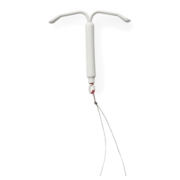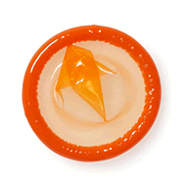KTHANXBYE: 5 questions to ask yourself before quitting your birth control
Thinking about changing your birth control method? Get started by answering these questions.

When I got the IUD three years ago, I was in love immediately. Well, almost immediately. For the first few hours after the insertion, I was curled up on the sofa in a pair of yoga pants with a book, waiting for the cramps to subside. But after that, my relationship with my new Paragard was pretty much all love. For that time in my life, it was the perfect birth control option for me.
The only time I had to think about the device was before I got it inserted—after that I was good to go for up to twelve years. I didn’t need regular check-ins with a provider beyond my annual exam. I wasn’t constantly paying for office visits and new prescriptions. Best of all, the Paragard is hormone-free, so my natural hormones could happily do their thing—and it didn’t interfere with my spontaneity.
1. Have you lost that loving feeling?
Flash forward three years: The IUD honeymoon had come to an end. I was experiencing too much pain before my period—and at other times, too. I found myself thinking about the IUD every day, which, in choosing to get one, was so not the point. For a few months I managed the discomfort because, hey, the IUD was free and already in place. And even though I knew I had a lot of choices for other birth control methods, there wasn’t another I wanted to use instead.
I went back and forth for months before I finally decided: having the IUD, while logistically and financially convenient, just wasn’t worth the discomfort and stress I was experiencing daily. It was time to reevaluate.
2. Have you talked with your health care provider?
After a few months of discomfort with the IUD, I finally decided to talk to a professional. I wasn’t sure if the pain I was experiencing was normal or if the IUD was even still in the right place. While it may seem like a hassle to make time for an unanticipated appointment, talking to your provider can help you figure out whether the issues you’re experiencing are caused by your method as well as consider whether another method might be a better fit for you.
If you’re making an appointment with a provider to talk about changing your method, think about whether you might be ready to make the switch while you’re there. Depending on your access to health care, schedule, and insurance coverage, it might be easier that way. If you think you may want to change methods during your visit, give your provider’s office a heads up.
When I got the IUD removed, I prepped my provider in advance by letting her office know when I scheduled my appointment that I might want to have my IUD taken out. During my visit, the provider and I decided to do a manual exam and ultrasound to make sure the IUD was in the right place. (If it wasn’t, that could have been the cause of my discomfort.) The IUD was exactly where it was supposed to be but still giving me trouble, so I decided to get it removed during that visit and save myself a second trip.
3. Have your health needs changed?
Consider how you may have grown or changed since you started using your method. Maybe you have a new partner, a new insurance plan, or different access to a provider or pharmacy than you did before. Part of my love for the IUD had to do with how easy it was for me to maintain while I lived far from my provider. After moving to a new city, I had different access to health care that helped me consider some alternative options.
4. Is this the right time?
As you’re thinking about whether to switch methods, here are a few other questions that may help you decide:
- Are you considering getting pregnant soon?
- Are you going to be travelling or away from your provider?
- Are you expecting any changes to your insurance?
- Is there a major cost difference between the method you use now and the one you’re considering?
- Do you need insurance coverage or a visit to a provider to change your birth control?
If you’ve just gotten an IUD or have recently changed your method, give yourself time to adjust. I noticed with my IUD that it took a few menstrual cycles before I knew what to expect. Some folks with the Paragard say they have worse cramps, heavier periods, and more intense PMS. During the first few months I got random cramping throughout my cycle, but it eventually went away.
If you’ve been using the same method for a while and used to be happy with it, consider whether you might just be going through a rough patch. Stress and life’s ups and downs can affect us in ways we don’t always realize, so keeping track of your symptoms, diet, lifestyle, and emotions in a journal or with the help of a handy period tracker app can be a good first step.
5. What’s next?
Is there a better method out there for you, or are you ready to get pregnant? If you don’t know the answer to those questions, do you have a backup method you can use while you figure it out?
Whether you’re experiencing discomfort or just general dissatisfaction, it may make sense to stop using your method—but if you’re not ready for a baby, it’s important to have a plan for preventing pregnancy going forward. Bedsider’s comparison tool lets you compare different methods in terms of effectiveness, side effects, cost, and other factors. Remember that it may take some days for certain methods to become effective, so if you switch to one of those methods, have a backup ready and don’t forget to use it!
After getting the IUD out, I needed some time to reevaluate what methods I might want to use in the long term. In the meantime, I decided to use condoms, a method that to me feels reliable, widely available, and easy to think about. While I loved the IUD for its ease and effectiveness, it just wasn’t working for me anymore. As our lives change, our birth control needs may change too. No matter what, you deserve a method that feels right for you. Go out there and get it.
How do you feel about this article?

Heat up your weekends with our best sex tips and so much more.

